Hyundai i10 vs Nissan Juke – Which one offers the better deal?
Two cars, one duel: Hyundai i10 meets Nissan Juke.
Which one wins in performance, efficiency and value for money? Find out now!
Costs and Efficiency:
When it comes to price and running costs, the biggest differences usually appear. This is often where you see which car fits your budget better in the long run.
Hyundai i10 has a significantly advantage in terms of price – it starts at 14600 £, while the Nissan Juke costs 21400 £. That’s a price difference of around 6823 £.
Fuel consumption also shows a difference: Nissan Juke manages with 4.70 L and is therefore minimal more efficient than the Hyundai i10 with 4.90 L. The difference is about 0.20 L per 100 km.
Engine and Performance:
Power, torque and acceleration say a lot about how a car feels on the road. This is where you see which model delivers more driving dynamics.
When it comes to engine power, the Nissan Juke has a noticeable edge – offering 143 HP compared to 90 HP. That’s roughly 53 HP more horsepower.
In acceleration from 0 to 100 km/h, the Nissan Juke is a bit quicker – completing the sprint in 10.10 s, while the Hyundai i10 takes 11.40 s. That’s about 1.30 s faster.
In terms of top speed, the Nissan Juke performs barely noticeable better – reaching 180 km/h, while the Hyundai i10 tops out at 175 km/h. The difference is around 5 km/h.
There’s also a difference in torque: Nissan Juke pulls slightly stronger with 200 Nm compared to 172 Nm. That’s about 28 Nm difference.
Space and Everyday Use:
Beyond pure performance, interior space and usability matter most in daily life. This is where you see which car is more practical and versatile.
Both vehicles offer seating for 5 people.
In curb weight, Hyundai i10 is evident lighter – 996 kg compared to 1274 kg. The difference is around 278 kg.
In terms of boot space, the Nissan Juke offers convincingly more room – 422 L compared to 252 L. That’s a difference of about 170 L.
In maximum load capacity, the Nissan Juke performs slightly better – up to 1305 L, which is about 255 L more than the Hyundai i10.
When it comes to payload, Nissan Juke minimal takes the win – 427 kg compared to 423 kg. That’s a difference of about 4 kg.
Who comes out on top?
Overall, the Nissan Juke shows itself to be outperforms in nearly all aspects and secures the title of DriveDuel Champion.
It convinces with the more balanced overall package and proves to be the more versatile choice for everyday use.
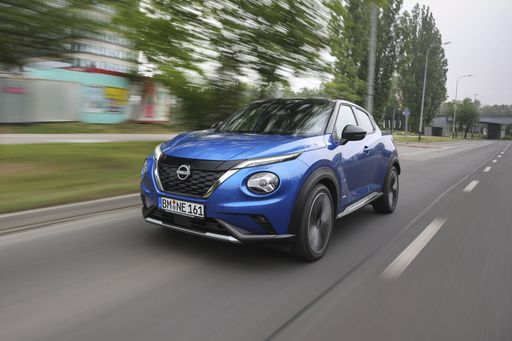
Nissan Juke
Hyundai i10
The Hyundai i10 impresses with its compact design, making it an ideal choice for navigating through busy urban environments. Its interior is surprisingly spacious, offering drivers and passengers comfort beyond what one might expect from a city car. The model combines efficiency and practicality, making it an attractive option for those seeking both economy and functionality in their daily commute.
details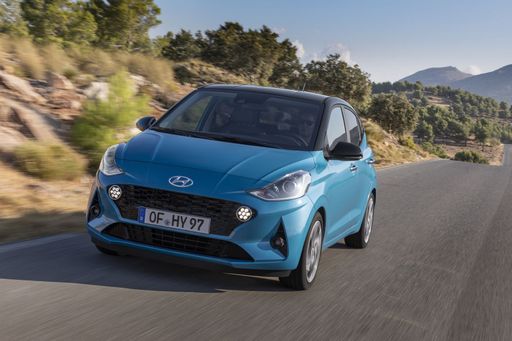 @ hyundai.news
@ hyundai.news
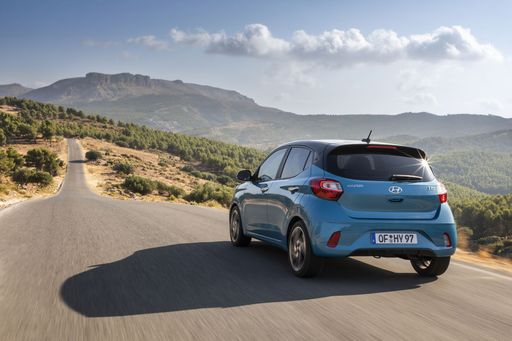 @ hyundai.news
@ hyundai.news
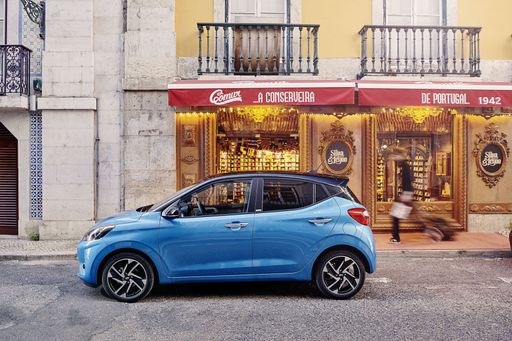 @ hyundai.news
@ hyundai.news
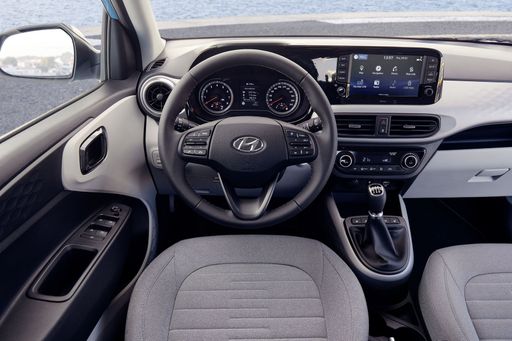 @ hyundai.news
@ hyundai.news
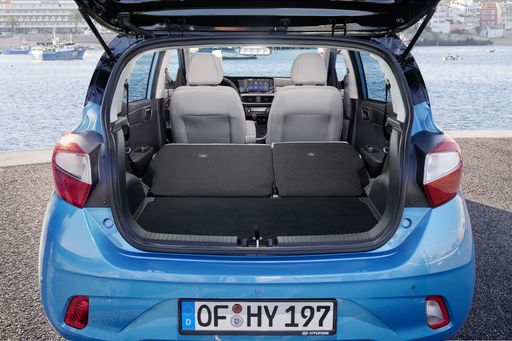 @ hyundai.news
@ hyundai.news
Nissan Juke
The Nissan Juke stands out with its distinctive design and bold styling, making it a popular choice for those seeking something different on the road. Its interior cleverly combines modern technology with comfort, offering an enjoyable driving experience for both the driver and passengers. Despite its compact size, the Juke provides a surprising amount of space and versatility, making it suitable for urban adventures and weekend getaways alike.
details @ germany.nissannews.com
@ germany.nissannews.com
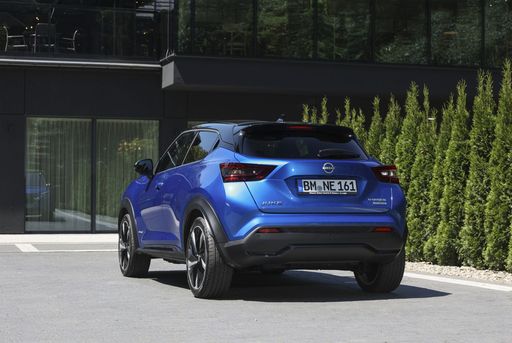 @ germany.nissannews.com
@ germany.nissannews.com
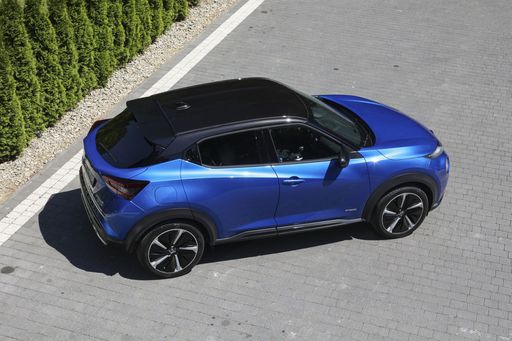 @ germany.nissannews.com
@ germany.nissannews.com
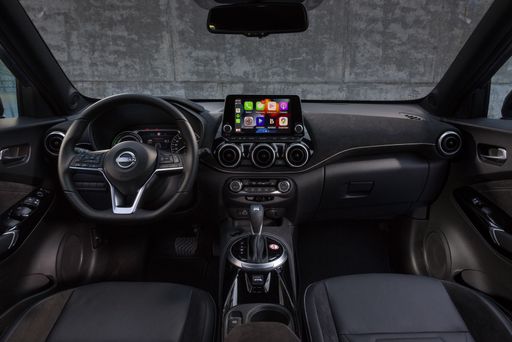 @ germany.nissannews.com
@ germany.nissannews.com

|

|
|
|
|
Costs and Consumption |
|
|---|---|
|
Price
14600 - 19000 £
|
Price
21400 - 30100 £
|
|
Consumption L/100km
4.9 - 5.5 L
|
Consumption L/100km
4.7 - 6 L
|
|
Consumption kWh/100km
-
|
Consumption kWh/100km
-
|
|
Electric Range
-
|
Electric Range
-
|
|
Battery Capacity
-
|
Battery Capacity
0.60 kWh
|
|
co2
110 - 124 g/km
|
co2
107 - 136 g/km
|
|
Fuel tank capacity
36 L
|
Fuel tank capacity
46 L
|
Dimensions and Body |
|
|---|---|
|
Body Type
Hatchback
|
Body Type
SUV
|
|
Seats
4 - 5
|
Seats
5
|
|
Doors
5
|
Doors
5
|
|
Curb weight
996 - 1099 kg
|
Curb weight
1274 - 1405 kg
|
|
Trunk capacity
252 L
|
Trunk capacity
354 - 422 L
|
|
Length
3670 - 3675 mm
|
Length
4210 mm
|
|
Width
1680 mm
|
Width
1800 mm
|
|
Height
1480 - 1483 mm
|
Height
1593 mm
|
|
Max trunk capacity
1050 L
|
Max trunk capacity
1237 - 1305 L
|
|
Payload
344 - 423 kg
|
Payload
405 - 427 kg
|
Engine and Performance |
|
|---|---|
|
Engine Type
Petrol
|
Engine Type
Petrol, Full Hybrid
|
|
Transmission
Manuel, Automatic
|
Transmission
Manuel, Automatic
|
|
Transmission Detail
Manual Gearbox, Automated Manual
|
Transmission Detail
Manual Gearbox, Dual-Clutch Automatic, Automatic Gearbox
|
|
Drive Type
Front-Wheel Drive
|
Drive Type
Front-Wheel Drive
|
|
Power HP
63 - 90 HP
|
Power HP
114 - 143 HP
|
|
Acceleration 0-100km/h
11.4 - 18.4 s
|
Acceleration 0-100km/h
10.1 - 11.8 s
|
|
Max Speed
143 - 175 km/h
|
Max Speed
166 - 180 km/h
|
|
Torque
93 - 172 Nm
|
Torque
200 Nm
|
|
Number of Cylinders
3 - 4
|
Number of Cylinders
3 - 4
|
|
Power kW
46 - 66 kW
|
Power kW
84 - 105 kW
|
|
Engine capacity
998 - 1197 cm3
|
Engine capacity
999 - 1598 cm3
|
General |
|
|---|---|
|
Model Year
2024
|
Model Year
2024
|
|
CO2 Efficiency Class
C, D
|
CO2 Efficiency Class
D, E, C
|
|
Brand
Hyundai
|
Brand
Nissan
|
Is the Hyundai i10 offered with different drivetrains?
The Hyundai i10 is offered with Front-Wheel Drive.
The prices and data displayed are estimates based on German list prices and may vary by country. This information is not legally binding.
